After dire predictions about how strict the Uzbek border guards would be and long it would take us to get across the border, in the end only took 4.5 hours to cross from Tajikistan to Uzbekistan with the truck, the guards only interested in what medications we were carrying. This meant we easily made it all the way back south to Samarkand in the one day.
My overwhelming first impressions of this city are:
- Samarkand is HOT! 30 degrees by 9am, and it’s not even the hottest part of the year!
- Samarkand traffic is absolutely, bloody nuts and they really don’t like pedestrians!
I was super-excited about visiting Samarkand, as it is the home of the Registan – for me, the classic image of the Silk Road. Needless to say, that was the first place I headed.
The Registan
The Registan was the heart of Samarkand and the center of the Tamerlane (Timur) empire in the 14th and 15th centuries. It is even more impressive than you can possibly imagine from the pictures – the Russians and then the Uzbeks have done an amazing restoration job!
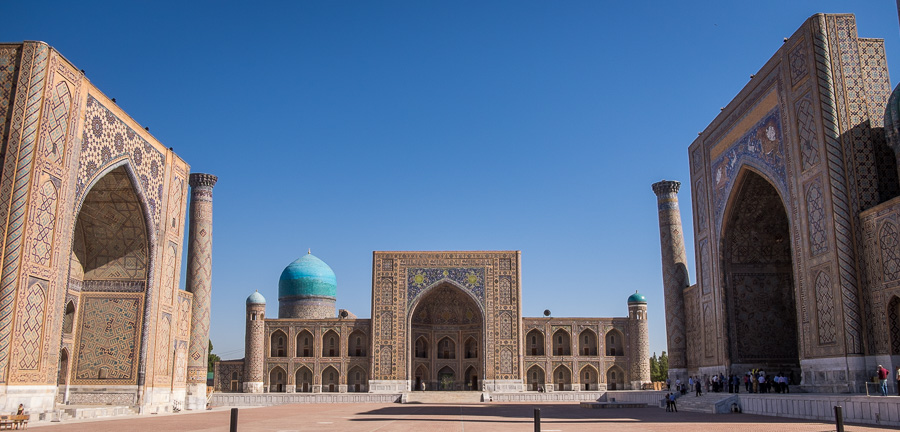
It consists of three madrassahs, and I was surprised to discover that one – the Ulugbek Madrassah, completed in 1420 – is significantly older than the other two.

The Sher Dor Madrassah (completed 1636) is directly opposite the Ulugbek Madrassah and is still undergoing restoration inside, but the roaring lions (that look like tigers) on the front façade are amazing.

The Tilla-Kari Madrassah (completed 1660) has a wonderful courtyard

and a very impressive mosque that is decorated with gold to symbolize the wealth of Samarkand at the time.
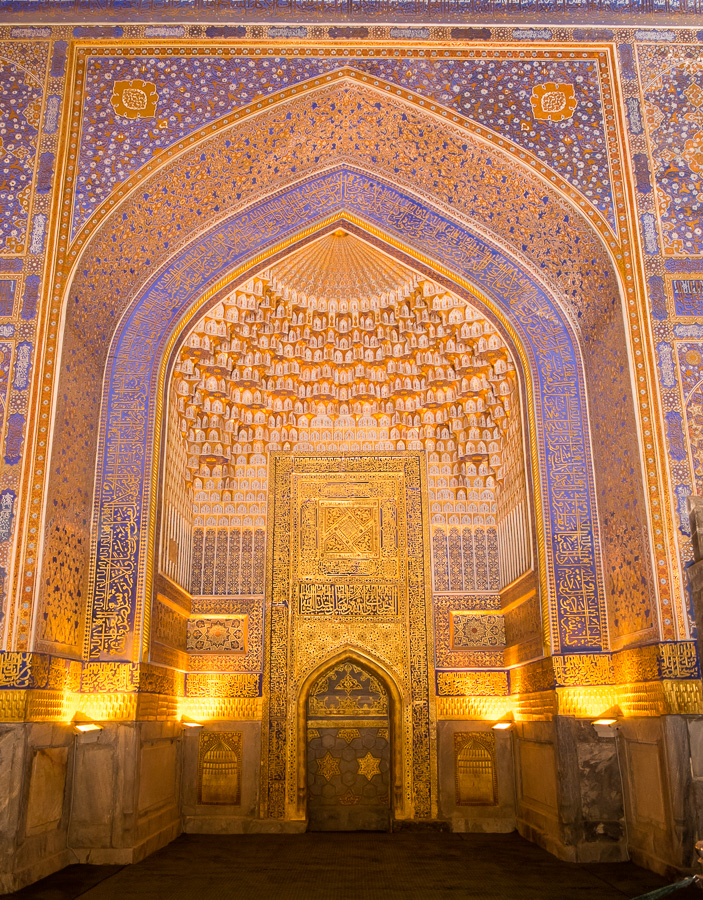
I love all the detail!

I hung out at the Registan for about 4 hours on my first visit – exploring each of the madrassahs, and just sitting and taking it all in from different angles. Given the fame of the Registan, I really expected to see tons of international tourists, but there were actually very few – I estimate 95% of visitors were locals. Apparently, it is not high season at the minute, but still!
This meant that I myself was a major attraction of the site! I felt like a celebrity as person after person, family after family asked whether they could have their photo taken with me. I even had a baby thrust into my arms on one of these photo opportunities – the baby less than impressed with the whole thing.
Then there were the large number of young Uzbeks who were very keen to practice their English. Many of them were quite direct in coming up and saying “hello” and asking if they can chat, and most of the time I was happy to do so. It occurred to me after a while that this was kind of like sitting down on the Malecon in La Habana in Cuba last year … but for some reason I didn’t mind chatting here. In Cuba, I didn’t feel like it.
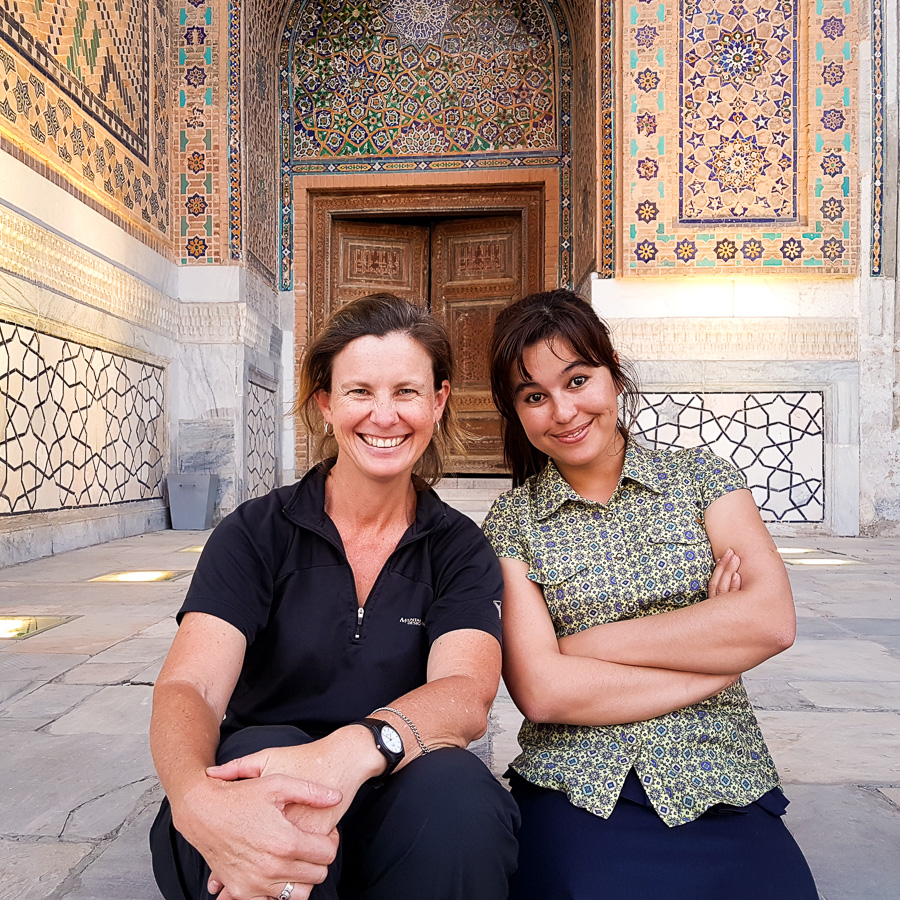
While the Registan is incredible during the day, it is unbelievably beautiful when lit up at night. Thank goodness the Uzbeks have gone for a natural lighting rather that lurid blues and greens that I’ve seen in other places. You really could sit here and watch forever! In fact, it was so beautiful, I returned the next night as well.
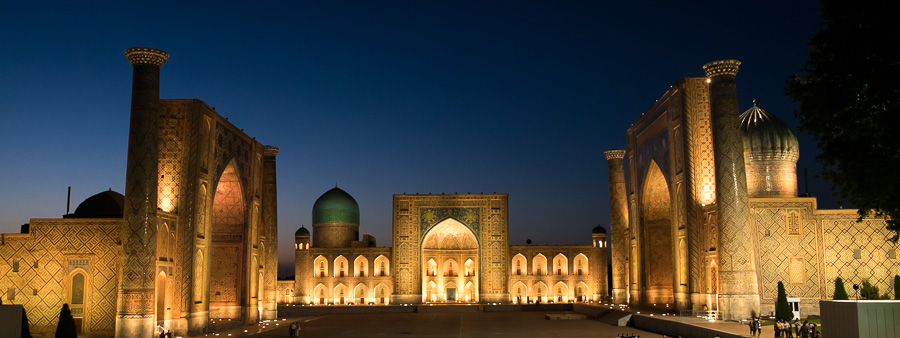
The one disappointment of the Registan is that every room on the ground floor of each of the madrassahs has been converted into tourist shops that sell the worst kind of tourist tat you can possibly imagine. Seriously, who buys this stuff? There were a couple of places that sold nice things, but the majority was very much crap. I guess the good thing is that they are hidden away for the most part and don’t detract from the vistas of the site. And while I understand why they are there, it’s disappointing that tourism equates with buying tacky souvenirs. How much more enriching it would be if the madrassahs were fulfilling their original purpose as teaching centres, and visitors could learn about the history of Samarkand or attend a workshop in a traditional activity of the area (e.g. embroidery of suzanis).
Ulugbek’s Observatory
Ulugbek was the grandson of Tamerlane (Timur) and very keen on education – he built the first madrassah that would eventually make up the Registan. One of the forefathers of modern astronomy, Ulugbek made many important measurements of the heavens. Some, such as the length of the year and the tilt of the Earth’s axis, are surprisingly close to modern measurements, and the Zij-i-Sultani, a catalogue of 1018 star positions that identified many errors in previous measurements, bridged the gap between Ptolemy and Tycho Brahe.

Unfortunately, there isn’t much left of the Observatory he built (considered the finest in the Islamic world at the time it was completed in 1429), apart from part of the sextant track that he used to make his measurements.
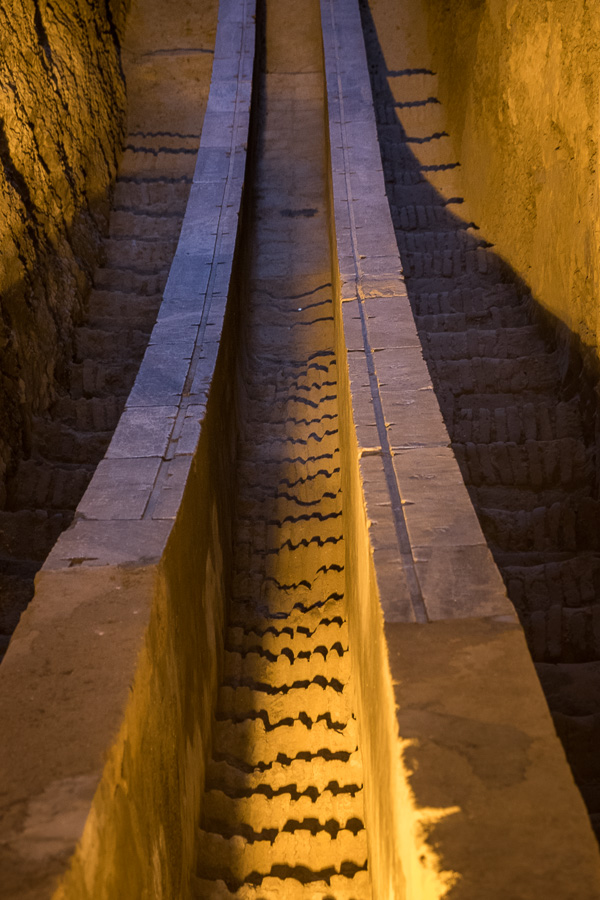
It must have been incredible back in the day – its destruction a great travesty by religious zealots.
Gur-E-Amir Mausoleum
The final place I chose to visit (you need a lot longer in Samarkand to see it all!) was the final resting place of my friend Ulugbek and his grandfather Tamerlane (Timur). Yet another gorgeous building decorated with blue and turquoise tiles – how I love this architecture!

And inside is simply stunning!

One of the things I’m loving about this architecture is the 3-dimensionality of it. This is especially prevalent in the recesses of the arches, but also in the raised script and other design details as well.

Tamerlane is buried in a crypt under a single block of dark green jade, and Ulugbek under a white stone.

I was there quite late in the day so had a few moments (between French tour groups and large numbers of locals) where I had the place to myself. Very peaceful. Very beautiful. Absolutely amazing.
All in all, and despite the heat, I really loved Samarkand. Although each of the tourist sites was relatively expensive to enter (if you can call $4-$8 expensive), they were incredible and absolutely worth every cent and every moment spent.
The jewel of the Silk Road certainly didn’t disappoint and the photos really don’t do it justice – I wish I’d had a lot more time there!